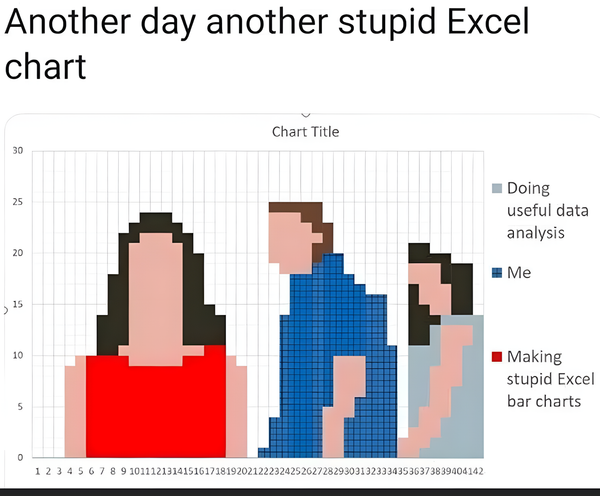The Managers' Guide #111

From what tech workers are telling me, AI has been automating the role of "CEO's annoying nephew who needs to be included in your project or you get fired"
The deadline doom loop
- 🔄 The Vicious Cycle — The core idea is the “Deadline Doom Loop,” a cycle where an arbitrary deadline forces a team to cut corners and accumulate technical debt. This debt makes the next project slower, prompting management to set an even more aggressive deadline to “fix” the slow pace, thus repeating the loop.
- 🤔 Focus on the Wrong Metric — Deadlines often fail because they turn a measure (a date) into a target. According to Goodhart’s Law, this causes teams to optimize for hitting the date at all costs, even if it means shipping a poor-quality product that creates more problems down the line.
- 🎭 The Illusion of Success — Shipping on time creates a false sense of accomplishment. While the team celebrates hitting the deadline, the hidden cost of technical debt quietly grows, making the entire system more fragile and future work more difficult. This short-term “win” masks the long-term damage.
- 💡 The Solution is Cadence, Not Deadlines — The alternative is to abandon arbitrary deadlines in favor of a sustainable cadence. By focusing on shipping small, valuable increments continuously, teams can deliver value, learn from feedback, and maintain quality without burning out or accumulating massive debt. The goal shifts from “when will it be done?” to “what can we learn next?”
A Vision for Product Teams
- 🌟 It’s a Guiding Star, Not a Plan — A product vision is a persuasive and inspiring story about the future, typically looking 2-5 years ahead. Its job isn't to be a roadmap but to provide a north star that aligns the team and helps them make difficult trade-offs.
- 🤔 Problem, Not Solution — A great vision starts with the why. It encourages the team to fall in love with the problem they are solving for the customer, not with a specific solution or technology. This focus ensures the team remains agile and customer-centric.
- 🗺️ Vision vs. Strategy — The article makes a clear distinction: The product vision is the future state you want to create. The product strategy is the sequence of steps or products you’ll build to realize that vision. The vision is the destination; the strategy is the path.
- 🗣️ Evangelism is Key — The product leader is responsible for creating, owning, and constantly evangelizing the vision. It’s not a “document and forget” exercise. It requires continuous communication to ensure everyone from engineering to marketing is motivated and working toward the same inspiring goal.

Should managers still code?
- 🤔 It's a Balancing Act — There is no simple “yes” or “no.” A manager’s primary responsibility is supporting their team through coaching, strategy, and removing obstacles. Coding should never get in the way of these core duties, which are their actual job.
- ⚠️ The Dangers of Coding — The biggest risks are becoming a bottleneck on critical work, accidentally micromanaging engineers by taking interesting tasks from them, and losing focus on essential management activities like 1-on-1s and strategic planning.
- 🛠️ The "Janitor" Rule — If a manager does code, they should focus on tasks that help the team without blocking them. The best contributions are often the unglamorous “janitorial” work — fixing small bugs, improving documentation, or optimizing build scripts, not shipping major features.
- 🗺️ Context is Everything — The right answer depends heavily on the situation. For a manager of a very small team, some coding might be feasible and beneficial for staying connected. For a Director or VP managing other managers, coding is almost always a distraction from their strategic responsibilities.
The trouble with "good enough"
- ⚠️ The Deceptive Comfort of “Good Enough” — The article argues that settling for “good enough” is a silent killer for ambition. It feels rational and safe, but it lulls teams into a state of complacency, preventing them from pursuing truly great or innovative work.
- ♟️ Mediocrity is Not a Moat — A product that is only “good enough” is easy to copy and has no sustainable competitive advantage. It’s the exceptional, “insanely great” aspects of a product that build a loyal customer base and a defensible market position.
- 🥱 The Blind Spot of Adequacy — Because “good enough” doesn’t feel broken, it creates no urgency to improve. This fosters a dangerous blind spot where teams miss opportunities for breakthrough success simply because the current state is acceptable, not exceptional.
- 🚀 Be Strategic About Greatness — The takeaway isn’t to pursue perfection in everything. Instead, teams should “pick their spots.” The key is to strategically identify the few critical areas where being truly exceptional will make all the difference, and focus immense effort there, while accepting adequacy elsewhere.
Good teams ship great products. Great teams kill bad ones.
- 🎯 The Real Goal Isn't Just Shipping — The article draws a critical distinction: A good team focuses on shipping features to show progress. A great team understands that success is defined by having the discipline to kill bad ideas — even well-executed ones — before they waste time and harm the product.
- 💀 The Hidden Cost of a Bad Idea — Shipping a flawed or unnecessary feature is actively harmful. It adds code complexity, requires ongoing maintenance, creates a confusing user experience, and bloats the product — a long-term tax paid for a short-term "win."
- 🛡️ Psychological Safety is Key — Great teams can kill bad ideas because they have high psychological safety. Team members feel safe enough to admit something isn’t working and challenge assumptions without fear of blame. This culture values learning from failure over celebrating hollow victories.
- 📊 Outcomes Over Output — The mindset shifts from “Did we build the thing?” to “Did we solve the problem?” A great team is focused on achieving a desired outcome. If data shows a feature won't achieve that outcome, killing it is a logical and celebrated decision, not a sign of failure.
That’s all for this week’s edition
I hope you liked it, and you’ve learned something — if you did, don’t forget to give a thumbs-up, add your thoughts as comments, and share this issue with your friends and network.
See you all next week 👋
Oh, and if someone forwarded this email to you, sign up if you found it useful 👇



